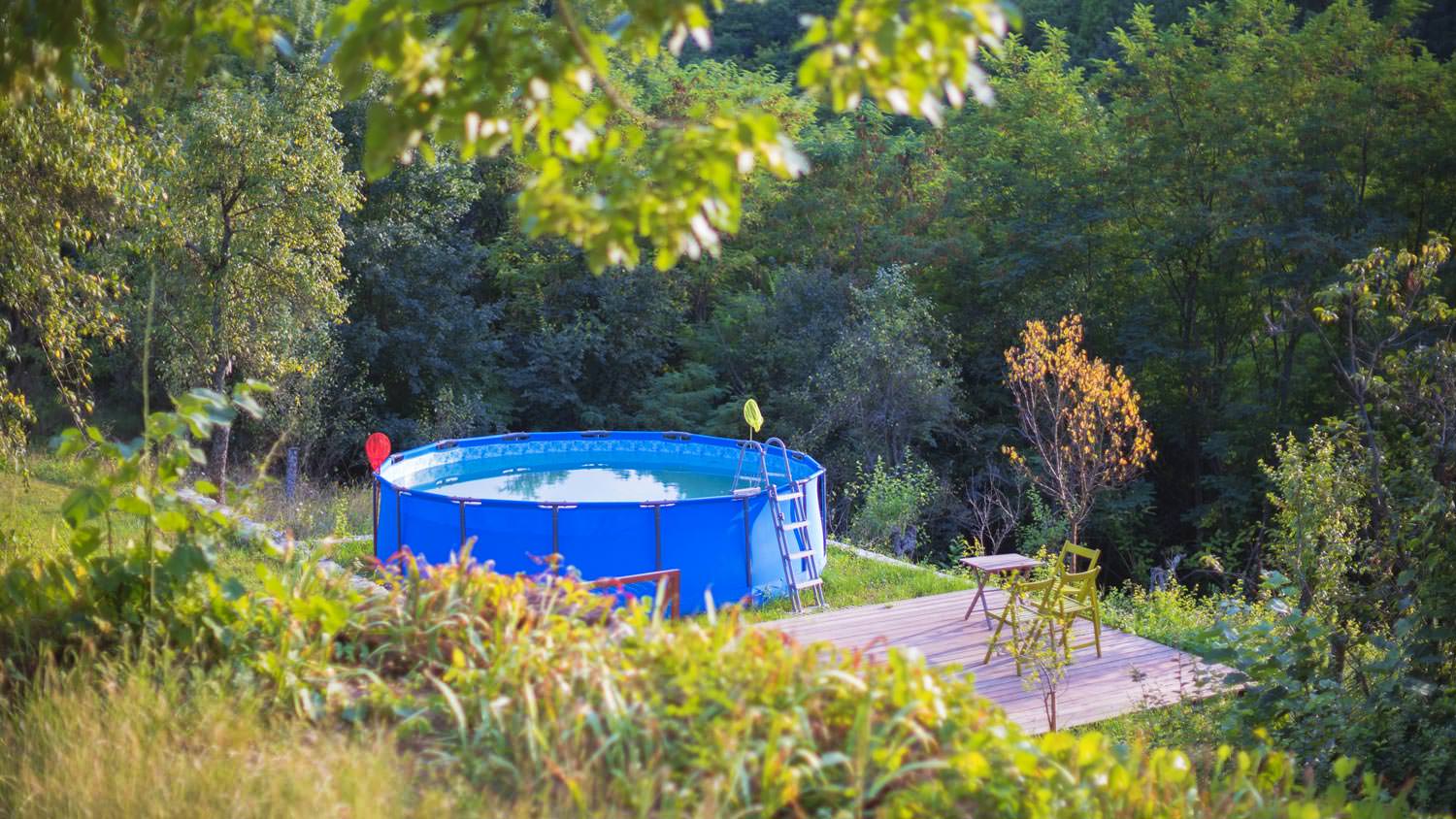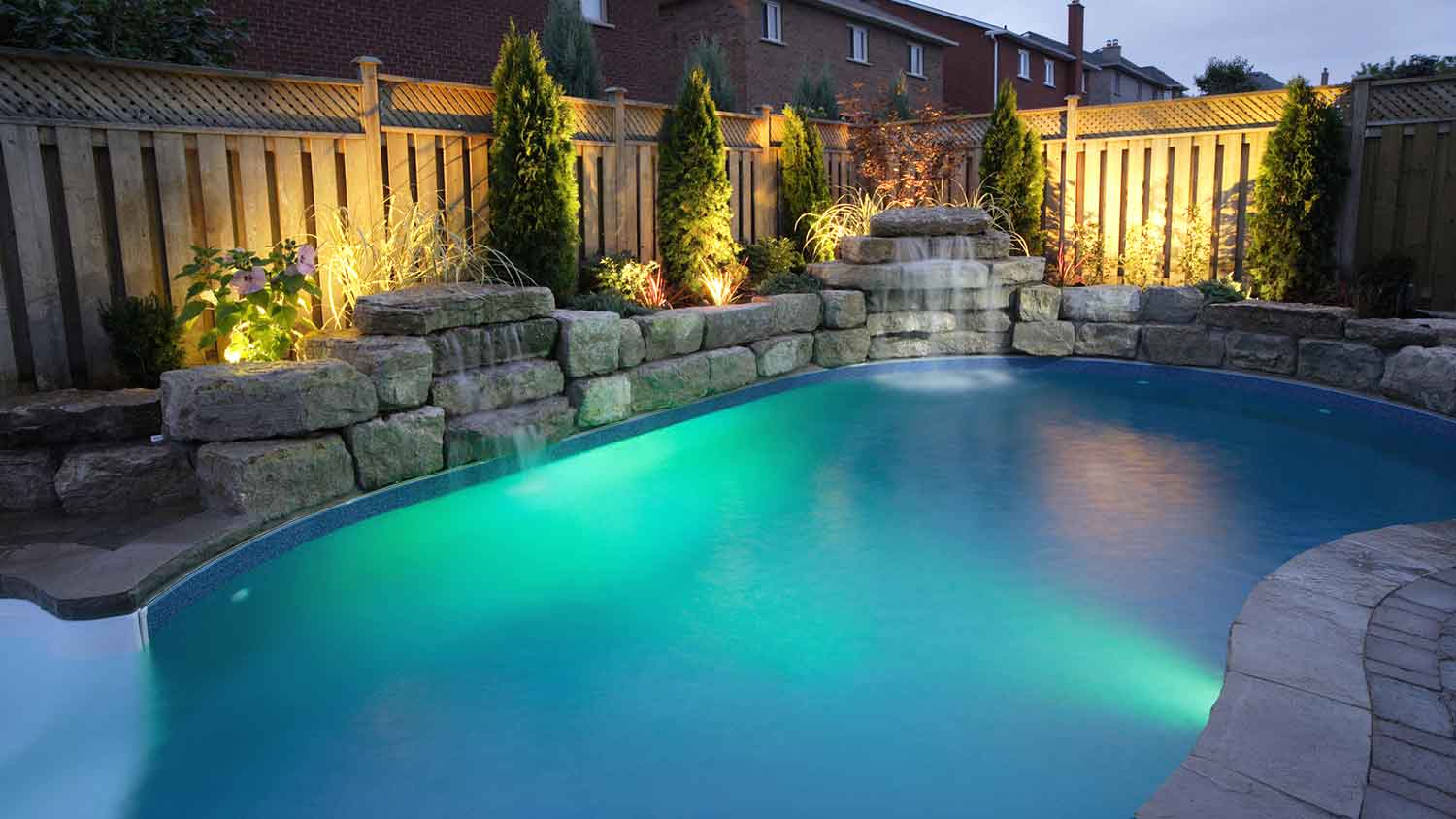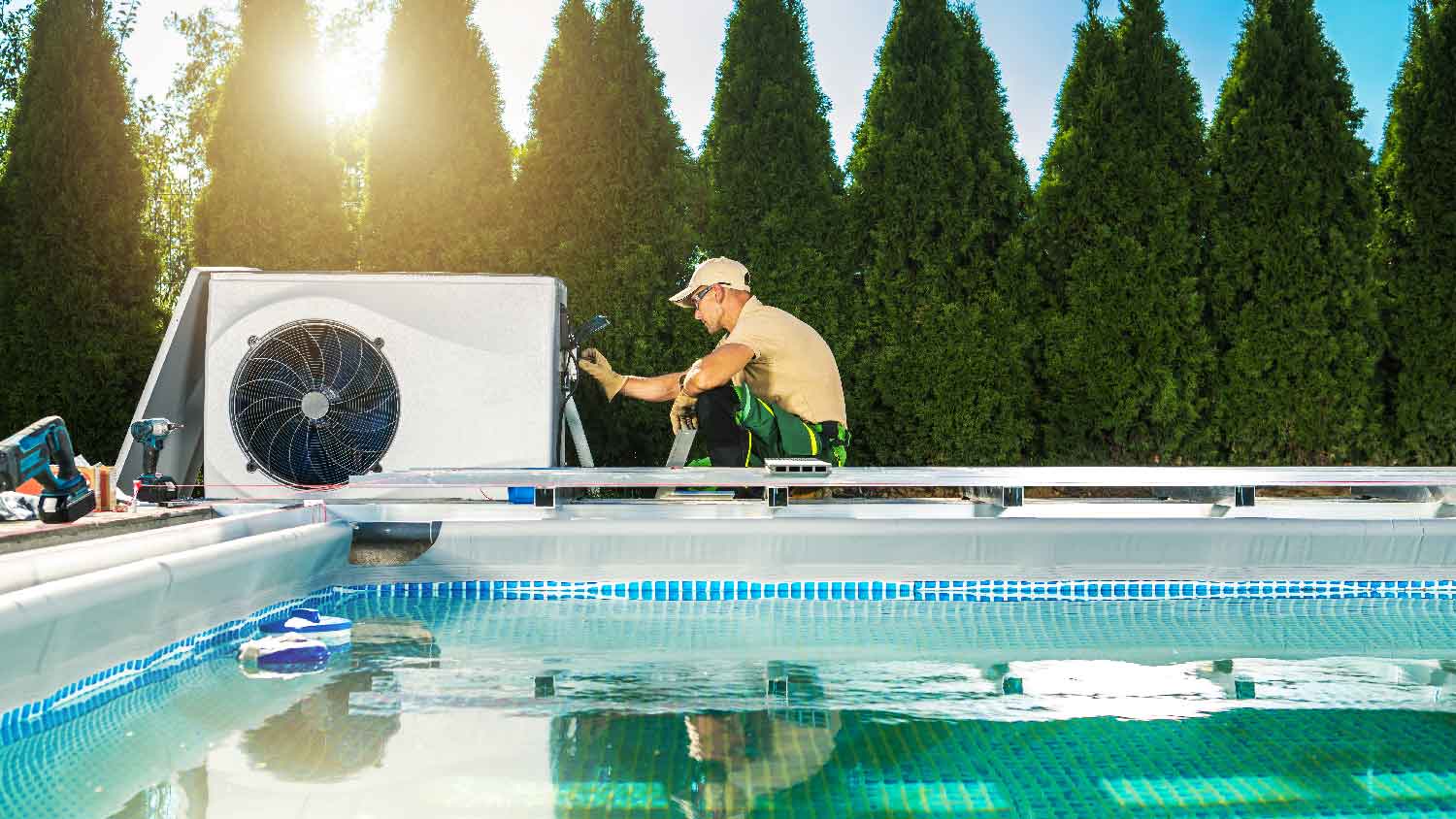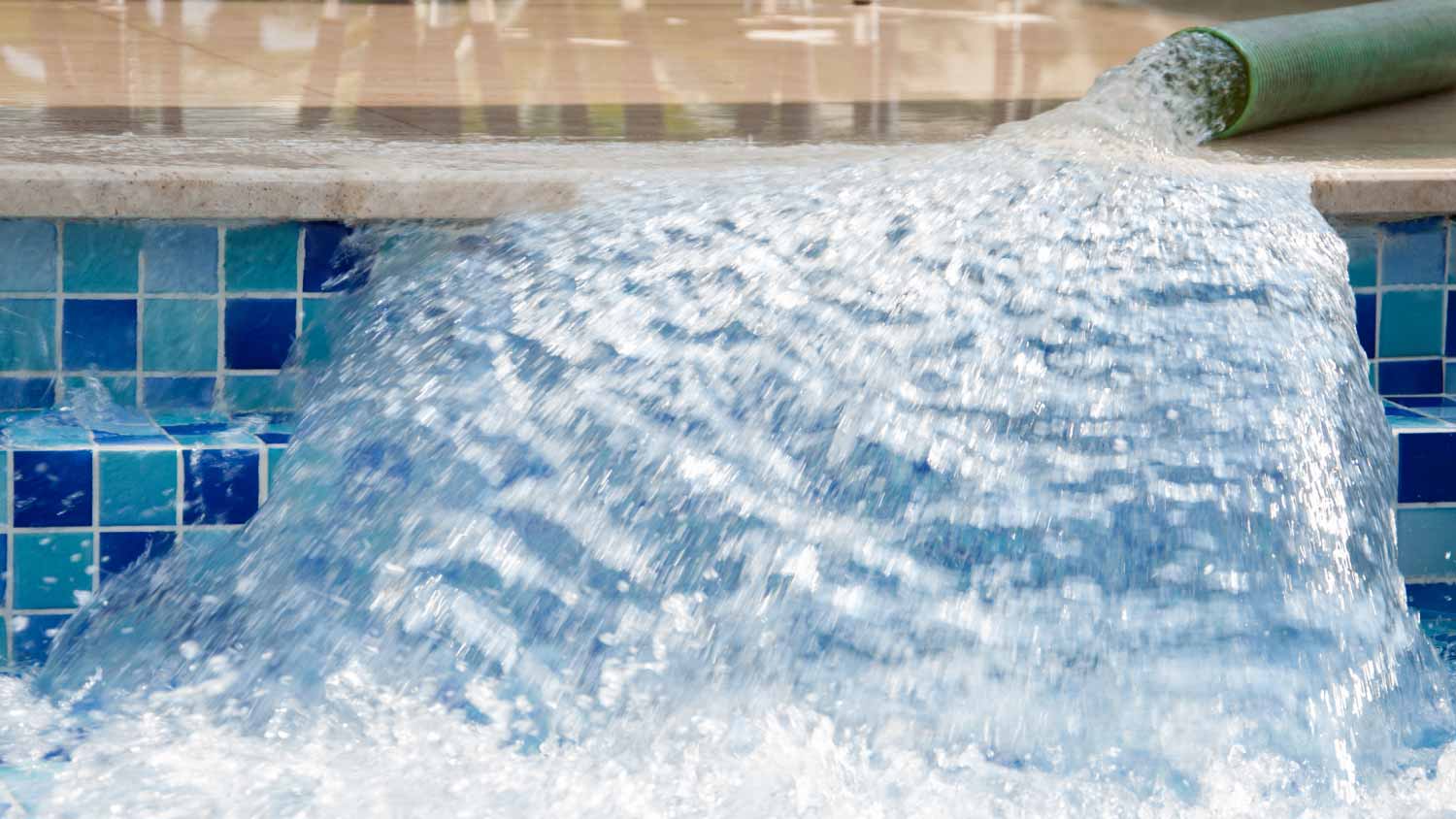
It’s time to kick back and cool down for the summer. If you’re ready to make a splash, check out how much an in-ground pool costs with this guide.
Pool resurfacing costs an average of $11,000, but your final cost will depend on the size of your pool and the material.


The average pool resurfacing cost for most homeowners is between $6,000 and $15,000, with an average total of $11,000.
Gunite and fiberglass cost the most to resurface—about $6,500 per 1,000 square feet.
Painting the surface will cost the least ($1,500) versus tiling ($4 to $30 per square foot).
Pool resurfacing is typically required every 10 years to maintain the structural integrity and visual appeal of your pool.
This article was created using automation technology and thoroughly fact-checked and edited by HomeAdvisor Editor Ryan Noonan.
Pool resurfacing costs between $6,000 and $15,000 on average, with most homeowners paying $11,000. On the low end, you could spend as little as $1,000, with high-end projects reaching up to $50,000.
Factors like size, type, and material significantly impact your total. Pool replastering is a key maintenance project needed every 10 years. Proper budgeting and hiring a professional for pool resurfacing are crucial to ensure a durable, long-lasting finish and to avoid unexpected expenses.

The main factors that determine the cost of resurfacing a pool are the pool size, material, and finish, as well as other considerations like whether the pool is in-ground or aboveground. Here’s a closer look at these and other factors that determine your total pool replastering cost.
The size of your pool is one of the most significant cost factors for resurfacing. The bigger your pool is, the higher your total cost will be. The cost to replaster a 6-by-8-foot pool averages $312, while a 20-by-40-foot pool is considerably more at $5,200.
| Pool Size | Average Cost to Resurface |
|---|---|
| 6-by-8 ft. | $312 |
| 8-by-12 ft. | $624 |
| 8-by-20 ft. | $1,040 |
| 10-by-8 ft. | $520 |
| 12-by-20 ft. | $1,560 |
| 16-by-32 ft. | $3,328 |
| 18-by-36 ft. | $4,212 |
| 20-by-40 ft. | $5,200 |
The material you choose impacts your pool resurfacing cost. Budget-friendly materials have lower up-front costs but wear out faster. Higher-end options look better and last longer, though they come with a bigger price tag.
| Material | Average Cost (per 1,000 sq. ft.) |
|---|---|
| Gunite (concrete) | $6,500 |
| Fiberglass | $6,500 |
| Vinyl-lined | $1,000–$3,500 |
Expect to spend around $6,500 per 1,000 square feet to refinish a gunite pool. However, the type of finish for a concrete pool significantly impacts the estimated cost. Most homeowners find that paint and plaster finishes are more affordable, while aggregate and pebble are more durable but cost more.
Fiberglass pools cost up to $6,500 per 1,000 square feet to resurface. Available finishes for fiberglass pool surfaces include paint, aggregate, pebble, and tile. Paint is the most inexpensive, while the other options are more durable and attractive but cost more.
The only way to resurface a vinyl-lined pool is to repair or replace it. Repairing a pool costs at least $100 to $500 in materials only, depending on the material’s thickness and durability. Full pool liner replacement costs between $1,000 and $3,500 per 1,000 square feet, with an average cost of $2,500.
Your chosen finish is another big line item in the resurfacing budget. Painting your pool’s surface will cost significantly less overall than a luxury tile finish.
| Finish | Average Cost |
|---|---|
| Paint | $1,500 per 1,000 sq. ft. |
| Plaster | $5,500 per 1,000 sq. ft. |
| Tile | $30,000 per 1,000 sq. ft. |
| Aggregate | $6,500 |
The cost to paint your fiberglass or gunite pool, including labor, is $1,500 per 1,000 square feet. While this is a budget-friendly option, it will wear down and need frequent repainting.
The cost to finish a pool with plaster (also called marcite), including labor and materials, is $5,500 per 1,000 sq. ft. While this is an inexpensive finish, it cracks, stains, has a rough texture, and wears down quickly.
Pool tile installation costs $15,000 on average, though actual prices can range between $2,000 and $70,000, depending on the pool size and the type of tile. Expect to pay anywhere from $4 to $30 per square foot or more to resurface a pool with tile.
Tile provides a high-end look and is also among the most labor-intensive to install. One advantage is that you can more easily replace a single broken tile later on. Porcelain and ceramic tiles are more affordable than glass tiles.
Aggregated finishes are aesthetically pleasing and long-lasting, but aren’t the best finish for comfort. They consist of pebbles, beads, stone, marble, or quartz mixed with water. The amount homeowners pay for this project depends on the material and brand.
The type of pool—aboveground or in-ground—also affects the overall cost. An in-ground pool costs more to resurface than an aboveground pool. All swimming pool components for an aboveground pool are more easily accessible, reducing repair and replacement labor costs. Replacing the base of an in-ground pool can further add to your expected costs.
Don’t forget to budget for draining and cleaning before work begins. Often, you’ll need to do both before a pool resurfacing pro can work on your pool. Draining a pool can add $175 to $225 to your total price, depending on its size. Meanwhile, local pool cleaning services charge an average of $250, depending on how dirty your pool is.
Refilling your pool once it has been resurfaced will cost an average of $55 per 5,000 gallons, though local water prices can vary.
Pool resurfacing contractors charge between $45 and $65 an hour, depending on the work involved and your location. Most local pool resurfacing pros can complete the project in five days. Labor costs to resurface a pool vary from region to region. Additionally, if pools are particularly common in your area, you may pay more for specialized labor and for sourcing the required materials.
If your pro needs to repair your pool before resurfacing it, you’ll pay more for this project in additional labor and material fees. Depending on the extent of the surface repair, pool repair costs range from $200 to $1,200 or more. How much you ultimately pay for pool plaster repairs depends on the size and type of pool, the extent of damage, and the cost of replacement parts.
Extra features and accessories elevate your price. Pool light costs range from $20 to $1,700, with most homeowners paying an average of $625 per light. If you want a total makeover, you’ll pay an average of $9,300 for the cost of pool remodeling.
Deciding between pool resurfacing and repair depends on the extent of the damage and the overall condition of your pool surface. Hire a local pool repair service to fix minor cracks, small chips, or isolated areas of wear. Pool repair is often less expensive than full resurfacing and can extend the life of your existing pool finish. Budget for minor repairs as part of your overall pool maintenance costs.
However, if your pool surface shows widespread cracking, extensive staining, or rough texture, full pool resurfacing is the more cost-effective, long-term solution. Consider factors like the age of the current pool surface, the severity of the damage, and the potential cost of repeated small repairs compared to comprehensive resurfacing.
A well-maintained swimming pool with a fresh, attractive surface can significantly boost your home’s curb appeal to potential buyers. In turn, this can increase your home’s value on the open market, recouping a return on investment of up to 40% to 80% of the pool resurfacing cost.
A recently replastered pool eliminates immediate maintenance concerns for buyers and presents an aesthetically pleasing feature to the property. The exact value increase depends on your local real estate market, the quality of the pool resurfacing work, and the chosen finish material.
Explore these practical strategies to manage costs while ensuring quality results with your pool resurfacing project:
Get at least three detailed estimates from licensed contractors to compare local pricing.
Consider mid-range surface options to balance durability and aesthetics against budgetary concerns.
Bundle pool resurfacing with other pool repairs or upgrades.
Evaluate whether minor repairs make more sense than a full pool resurfacing.
Research your chosen pool finish to ensure it matches your climate and maintenance capabilities.
Coordinate with neighbors who may also need pool resurfacing at the same time.
No place is more important than your home, which is why HomeAdvisor connects homeowners with local pros to transform their houses into homes they love. To help homeowners prepare for their next project, HomeAdvisor provides readers with accurate cost data and follows strict editorial guidelines. After a project is complete, we survey real customers about the costs to develop the pricing data you see, so you can make the best decisions for you and your home. We pair this data with research from reputable sources, including the U.S. Bureau of Labor Statistics, academic journals, market studies, and interviews with industry experts—all to ensure our prices reflect real-world projects.
From average costs to expert advice, get all the answers you need to get your job done.

It’s time to kick back and cool down for the summer. If you’re ready to make a splash, check out how much an in-ground pool costs with this guide.

Who installs above ground pools? Learn when to hire a pool installer vs. landscaper, what to expect, and the typical cost range.

Not sure who to call to fix a pool light? Learn why a pool repair service is best, what electricians can do, and what replacement costs.

Need to know who to call to fix a pool heater? See why a pool electrician is best for safe, code‑compliant pool heater repair—find a pro today.

Wondering who to hire to remodel a pool? Learn when to call a pool remodeling company vs. a pool installer, plus the steps pros take to transform your pool.

Who can I call to fill my pool with water? Compare pool water delivery vs. other options, see costs, and learn how pros get it done.